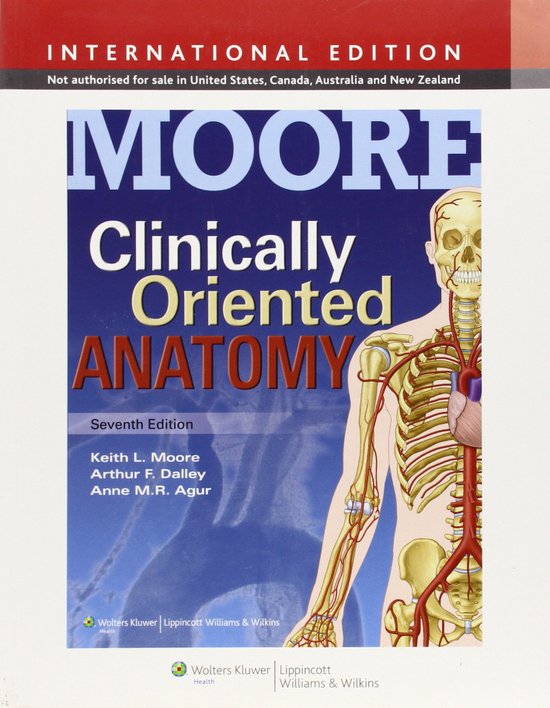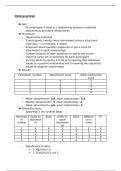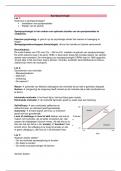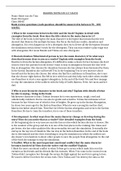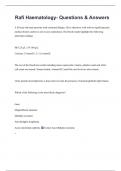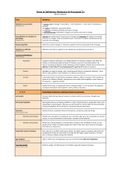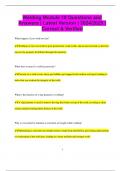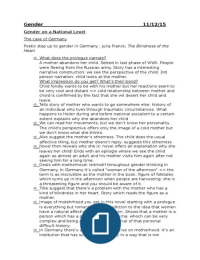HUMAN ANATOMY
First Year MBBS
Note: Underlined and bold
words are important and
often asked by teachers in
vivas. Some frequently
asked questions are also
mentioned here.
These are maximum clinicals
of lower limb put together
from different books and
internet by Umer Shehroz
Khan (Kemcolian)
Lower limb:
BONES OF LOWER LIMB:
Hip fractures:
Q. What is the most common type of hip fracture?
A. Intertrochanteric and femoral neck fractures are the most common types of hip fracture. Femoral head
fractures are extremely rare and are usually the result of a high-velocity event.
Types of hip fractures:
Hip fractures are classified according to their anatomical location as:
1) Intracapsular, which involves the femoral head and neck
2) Extracapsular, which includes intertrochanteric, trochanteric, and subtrochanteric fractures.
, Hip Bone:
Avulsion fracture of hip bone:
An avulsion fracture occurs when a small chunk of bone attached to a tendon or ligament gets pulled away from
the main part of the bone. (The hip, elbow and ankle are the most common locations for avulsion fractures in the
young athlete.) These fractures occur where
1) muscles are attached
2) apophyses (that lack secondary ossification center).
Weavers Bottom:
The inflammation of bursa over ischial tuberosity is called weavers bottom. It is also called as ischial bursitis or
ischiogluteal bursitis. It causes pain in buttock. It is caused by sitting for too long.
OR
It is the Inflammation of the bursa that separates the gluteus maximus muscle of the buttocks from the underlying
bony prominence of the bone that a person sits on (ischial tuberosity).
Q. Which region of hip bone is used for taking bone marrow biopsy?
A. Iliac crest. (it is done in case of anemia or leukemia)
Femur:
Femoral head fracture:
It is caused by posterior dislocation of hip joint and can be treated by hip replacement. It results in shortening of
lower limb with medial rotation.
Note: joint replacement is possible.
Avascular necrosis of femoral head:
The head of femur is supplied by retinacular arteries (branches of medial circumflex femoral artery) and branch
of obturator artery along ligamentum teres. During intracapsular fracture, they get damage and cause avascular
necrosis of head.
Femoral neck fracture:
The neck of femur can be considered to have two distinct areas, which are described relative to the joint capsule:
Intra-capsular fracture – which occur inside the capsule of hip joint. It has 2 types:
1) subcapital fracture: It is the fracture of femoral head or neck near the head.
2) Trans-cervical fracture: It is the fracture of the femoral neck, immediately proximal to the trochanters
Extra-capsular fracture – outside the capsule, subdivided into 3 types:
, 1) Inter-trochanteric fracture, which occur between the greater trochanter and the lesser trochanter
2) Sub-trochanteric fracture, which occurs at area 5cm distal to the lesser trochanter.
3) Pertrochanteric fracture, is a femoral fracture through the trochanters. The pull of the quadriceps femoris,
adductors, and hamstring muscles may produce shortening and lateral rotation of the leg. It is common in
elderly women because of an increased incidence of osteoporosis.
Femoral shaft fractures:
The most common types of femoral shaft fractures include:
1) Transverse fracture. In this type of fracture, the break is a straight horizontal line going across the femoral
shaft.
2) Oblique fracture. This type of fracture has an angled line across the shaft.
3) Spiral fracture. The fracture line encircles the shaft like the stripes on a candy cane. A twisting force to
the thigh causes this type of fracture.
Pillion fracture:
It is a T shaped fracture of the distal femur with displacement of the condyles. It may be caused by a blow
to the flexed knee of a person riding pillion on a motor cycle.
In fracture of the middle third of the femoral shaft, the proximal fragment is pulled by the quadriceps and the
hamstrings, resulting in shortening, and the distal fragment is rotated backward by the two heads of the
gastrocnemius.
Patella:
Transverse patellar fracture:
It results from a blow to the knee or from
sudden contraction of the quadriceps muscle.
The proximal fragment of the patella is pulled
superiorly with the quadriceps tendon, and the
distal fragment remains with the patellar
ligament.
First Year MBBS
Note: Underlined and bold
words are important and
often asked by teachers in
vivas. Some frequently
asked questions are also
mentioned here.
These are maximum clinicals
of lower limb put together
from different books and
internet by Umer Shehroz
Khan (Kemcolian)
Lower limb:
BONES OF LOWER LIMB:
Hip fractures:
Q. What is the most common type of hip fracture?
A. Intertrochanteric and femoral neck fractures are the most common types of hip fracture. Femoral head
fractures are extremely rare and are usually the result of a high-velocity event.
Types of hip fractures:
Hip fractures are classified according to their anatomical location as:
1) Intracapsular, which involves the femoral head and neck
2) Extracapsular, which includes intertrochanteric, trochanteric, and subtrochanteric fractures.
, Hip Bone:
Avulsion fracture of hip bone:
An avulsion fracture occurs when a small chunk of bone attached to a tendon or ligament gets pulled away from
the main part of the bone. (The hip, elbow and ankle are the most common locations for avulsion fractures in the
young athlete.) These fractures occur where
1) muscles are attached
2) apophyses (that lack secondary ossification center).
Weavers Bottom:
The inflammation of bursa over ischial tuberosity is called weavers bottom. It is also called as ischial bursitis or
ischiogluteal bursitis. It causes pain in buttock. It is caused by sitting for too long.
OR
It is the Inflammation of the bursa that separates the gluteus maximus muscle of the buttocks from the underlying
bony prominence of the bone that a person sits on (ischial tuberosity).
Q. Which region of hip bone is used for taking bone marrow biopsy?
A. Iliac crest. (it is done in case of anemia or leukemia)
Femur:
Femoral head fracture:
It is caused by posterior dislocation of hip joint and can be treated by hip replacement. It results in shortening of
lower limb with medial rotation.
Note: joint replacement is possible.
Avascular necrosis of femoral head:
The head of femur is supplied by retinacular arteries (branches of medial circumflex femoral artery) and branch
of obturator artery along ligamentum teres. During intracapsular fracture, they get damage and cause avascular
necrosis of head.
Femoral neck fracture:
The neck of femur can be considered to have two distinct areas, which are described relative to the joint capsule:
Intra-capsular fracture – which occur inside the capsule of hip joint. It has 2 types:
1) subcapital fracture: It is the fracture of femoral head or neck near the head.
2) Trans-cervical fracture: It is the fracture of the femoral neck, immediately proximal to the trochanters
Extra-capsular fracture – outside the capsule, subdivided into 3 types:
, 1) Inter-trochanteric fracture, which occur between the greater trochanter and the lesser trochanter
2) Sub-trochanteric fracture, which occurs at area 5cm distal to the lesser trochanter.
3) Pertrochanteric fracture, is a femoral fracture through the trochanters. The pull of the quadriceps femoris,
adductors, and hamstring muscles may produce shortening and lateral rotation of the leg. It is common in
elderly women because of an increased incidence of osteoporosis.
Femoral shaft fractures:
The most common types of femoral shaft fractures include:
1) Transverse fracture. In this type of fracture, the break is a straight horizontal line going across the femoral
shaft.
2) Oblique fracture. This type of fracture has an angled line across the shaft.
3) Spiral fracture. The fracture line encircles the shaft like the stripes on a candy cane. A twisting force to
the thigh causes this type of fracture.
Pillion fracture:
It is a T shaped fracture of the distal femur with displacement of the condyles. It may be caused by a blow
to the flexed knee of a person riding pillion on a motor cycle.
In fracture of the middle third of the femoral shaft, the proximal fragment is pulled by the quadriceps and the
hamstrings, resulting in shortening, and the distal fragment is rotated backward by the two heads of the
gastrocnemius.
Patella:
Transverse patellar fracture:
It results from a blow to the knee or from
sudden contraction of the quadriceps muscle.
The proximal fragment of the patella is pulled
superiorly with the quadriceps tendon, and the
distal fragment remains with the patellar
ligament.

